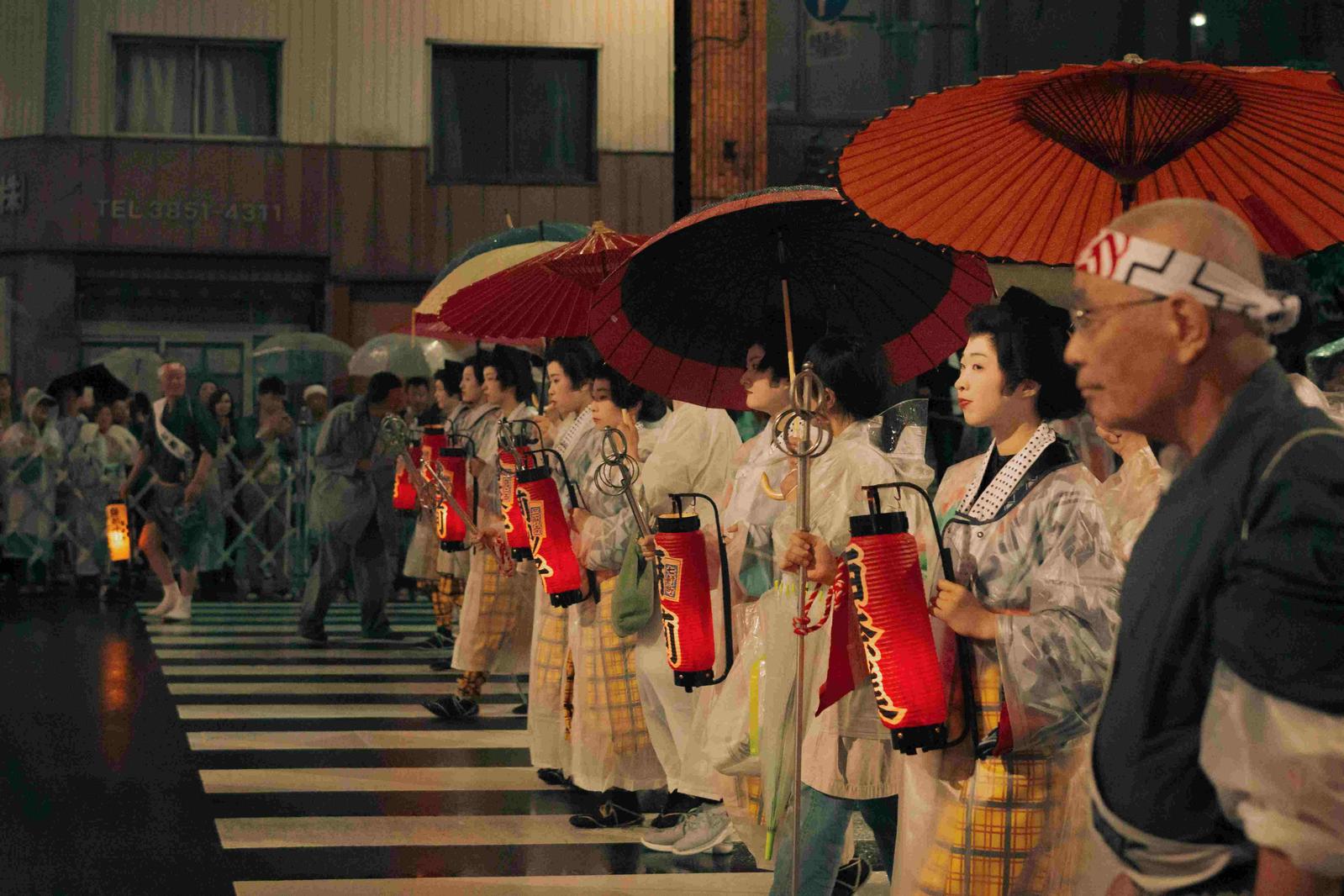Months of the Year in Japanese: Pronunciation, Examples & History
Last updated: September 30, 2025

From the hatsumode (初詣) first shrine visit of January and cherry blossoms of March to the plum rains of June and KFC bonanza of December, being able to talk about the months in Japanese is not only an easy first step in your journey to learn Japanese, it also opens up all kinds of doors for daily Japanese conversation—especially if you’ve already learned the days of the week in Japanese.
Not only that, but there’s an intriguing history behind the Japanese months, giving you a chance to wow fellow students, Japanese teachers and friends with the poetic origins of their calendars. So, let’s dive into the Japanese months, giving you all the tools you need to use them in daily conversations and understand their traditional, literary names in poetry, seasonal writing, and classical Japanese.
Mark the date—this is when you started learning about the months in Japanese.
Months in Japanese: Pronunciation 📅✨
The modern Japanese way to name months is very logical: combine the number of the month (one to 12) with the counter 月 (がつ).
- Here's a whole blog post about how Japanese counters work
- Below is a list of Japanese months:
English | Japanese | Audio |
|---|---|---|
January | 一月(いちがつ) | |
February | 二月(にがつ) | |
March | 三月(さんがつ) | |
April | 四月(しがつ) | |
May | 五月(ごがつ) | |
June | 六月(ろくがつ) | |
July | 七月(しちがつ) | |
August | 八月(はちがつ) | |
September | 九月(くがつ) | |
October | 十月(じゅうがつ) | |
November | 十一月(じゅういちがつ) | |
December | 十二月(じゅうにがつ) |
💡 Insight 💡
It’s also Although we’ve used the kanji for the numbers above, you'll usually see a numeral in place of the kanji. For example, 一月 becomes will become 1月, 二月 will become 2月, and so on.
Which Japanese months are pronounced differently?
If you already know a bit of Japanese, or you've already read our article on how to count in Japanese, you'll know that Japanese ways can be pronounced in a few different ways, depending on what exactly you're counting.
Why exactly that is the case is beyond the scope of this blog post—check out the article on on'yomi vs kun'yomi if you're curious—but we need to draw special attention to three of the months:
- April is pronounced shi‑gatsu, not yon-gatsu
- July is pronounced shichi‑gatsu, not nana-gatsu
- September is pronounced kugatsu, not kyuugatsu
Japanese months: Using them in a sentence 🗣️

Here are a few example sentences including the Japanese months, giving you a sense of how they might be used throughout the year and seasons!
- 私は1月に日本語を勉強し始めました。
I started studying Japanese in January. - 2月はとても寒いです。
February is very cold. - 3月に桜が咲きます。
Cherry blossoms bloom in March. - 4月から新しい仕事が始まります。
A new job starts in April. - 5月はゴールデンウィークがあります。
May has Golden Week. - 6月に雨がよく降ります。
It often rains in June. - 7月に海へ行きました。
I went to the beach in July. - 8月はとても暑いです。
August is very hot. - 9月は学校が始まる月です。
September is the month when school starts. - 10月にハロウィンがあります。
Halloween is in October. - 11月は紅葉がきれいです。
The autumn leaves are beautiful in November. - 12月にクリスマスがあります。
Christmas is in December.
How to ask, “Which month?” 「何月 (なんがつ)?」
To ask “which month is it?” or “which month is…?”, use 何月 (なんがつ).
- 来月は何月ですか?
What month is next month? - テストは何月ですか?
What month is the test?
Notice that the pronunciation for “what month” takes the gatsu sound, not getsu.
More useful vocab for the Japanese months
- 来月 (らいげつ) means “next month.”
- 今月 (こんげつ) means “this month.”
- 先月 (せんげつ) means “last month.”
Because... reasons... notice that these 月's are pronounced getsu, not gatsu.
Traditional Japanese months: 和風月名 (Wafū Getsumei) 📜

In addition to the modern month names, Japanese also has poetic, traditional names for each month. These names emerged in classical and court culture, often connected to seasonal imagery, agriculture, or nature.
The traditional month names are less common in everyday life, but you’ll see them in poetry, classical literature, seasonal greeting cards, or when authors want to evoke a sense of traditional Japan.
Here are the traditional names (with meanings or imagery):
Month | Traditional name and reading * | Audio | Imagery and meaning |
|---|---|---|---|
January | 睦月 (むつき) | A month of harmony, when families gather. | |
February | 如月 / 衣更着 (きさらぎ) | The month of changing clothes (adding or removing layers). | |
March | 弥生 (やよい) | Growth and new life for plants. | |
April | 卯月 (うづき) | The month when the 卯の花 (deutzia) blossoms. | |
May | 皐月 / 早月 (さつき) | The month for planting rice sprouts or early rice planting. | |
June | 水無月 (みなづき / みなつき) | / | Literally “month of no water”. |
July | 文月 (ふみづき / ふづき) | / | Month of letters or literary writing (linked to the Tanabata festival). |
August | 葉月 (はづき) | Month of leaves (as summer foliage begins to wane). | |
September | 長月 (ながつき) | Long nights or extended rains. | |
October | 神無月 (かんなづき / かみなづき) | / | Literally means “Month without gods”. |
November | 霜月 (しもつき) | Month when frost begins to fall. | |
December | 師走 (しわす) | The month when even teachers run (busy month). |
A few more fun facts about the traditional Japanese month names!
- 神無月 (Kannazuki): The name 神無月 (かんなずき), “month without gods,” refers to the belief that in October all the Shinto deities leave their local shrines to gather at Izumo Shrine. In Izumo, October is sometimes instead called Kamiarizuki (神有月, かみありずき)—“month with gods.”
- 水無月 (Minazuki/Minatsuki): The reading for 水無月 is somewhat debated: many modern Japanese historical linguists believe 無 (na) is an ateji (a kanji used to represent a sound, not a meaning)—in particular, that it is an ateji for の, no, Japan's possessive particle. That would make this mean month of water, which seems much more reasonable, if you've ever passed a June in Japan!
- Because these names are tied to the old lunar calendar, they don't always perfectly align with the Gregorian months we're used to using (and that Japan now uses).
In certain formal or poetic contexts (e.g. seasonal poems, haiku, formal letters), the traditional names might be used for stylistic effect. Using wafu getsumei can make your Japanese feel more elegant and poetic.
Why did Japanese months change to the modern style?

You might wonder why most Japanese people today use the “number + gatsu” system rather than the poetic traditional names. Here are a few reasons:
- Simplicity & clarity: The modern system is unambiguous and straightforward.
- Alignment with Western calendar: As Japan adopted the Gregorian calendar in the Meiji era (1868–1912), standardizing the numbered months made for easier synchronization.
- Traditional names tied to lunar calendar: Because the traditional names arose from the old lunar calendar, they don’t always align cleanly with modern months, making them less practical for everyday usage
That's not to say that the traditional names have disappeared completely, though. You'll still see them used, occasionally, though mostly in poetry, seasonal literature, classical works, or stylistic writing. While most Japanese people will recognize them, but they are rarely used in daily speech.
Some traditional names remain more familiar than others. For example, 師走 (Shiwasu) for December is still occasionally used in seasonal phrases or greeting cards.
Learn the months in Japanese with Migaku
Blog posts like this are useful in a pinch, but they're not very effective if your goal is to learn this stuff in order to make use of it yourself.
That's where Migaku comes in:

Our Japanese course works like this:
- You'll read about a concept or grammatical structure
- You'll commit it to memory by learning practical sentences that include it
And, of course, these aren't just any sentences
- We did some pretty heavy statistics to figure out the 1,500 most commonly used Japanese words
- We worked with native speakers to carefully curate a sentence for each one
- The sentences are progressive: each one includes only a single unknown word or grammar point
- A spaced repetition algorithm keeps track of how well you remember each word and nudges you to review from time to time, ensuring that you actually learn
Naturally, our course includes the Japanese months.
At a pace of about 10 flashcards per day (~30 minutes), you can go from zero to ready to explore Netflix in Japanese in just over 6 months.
Japanese months: Gatsu, getsu, and going beyond
Understanding how Japanese months are named opens a small but fascinating window into both the structure and spirit of the language. While the modern system of "number + 月 (gatsu)" is simple and easy to remember, the traditional names (和風月名 ) reveal the poetry and seasonality deeply woven into Japanese culture.
But even if you only remember the modern Japanese months—as most people do!—you’re still heading in the right direction.
And if you'll afford me a bit of a soapbox—you're here because you want to learn Japanese, right? In that case, I'd be remiss to end this article without sharing The Golden Rule of Language Learning:
If you consume Japanese media, and you understand some of the messages and sentences within that media, you'll make progress. Period.
Good luck!